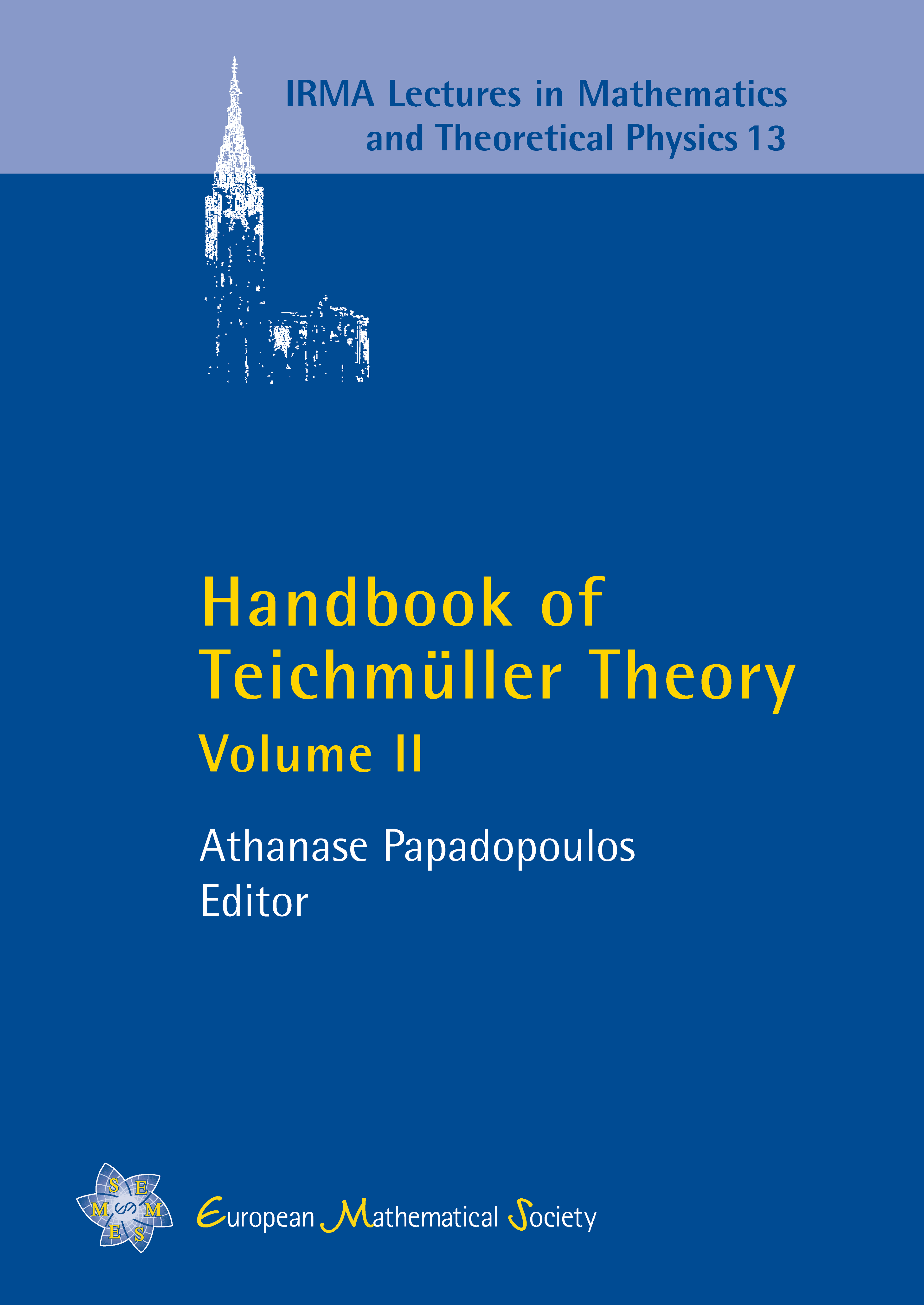Handbook of Teichmüller Theory, Volume II
Editors
Athanase Papadopoulos
IRMA, Strasbourg, France

A subscription is required to access this book.
This multi-volume set deals with Teichmüller theory in the broadest sense, namely, as the study of moduli space of geometric structures on surfaces, with methods inspired or adapted from those of classical Teichmüller theory. The aim is to give a complete panorama of this generalized Teichmüller theory and of its applications in various fields of mathematics.
The volumes consist of chapters, each of which is dedicated to a specific topic. The present volume has 19 chapters and is divided into four parts:
- The metric and the analytic theory (uniformization, Weil–Petersson geometry, holomorphic families of Riemann surfaces, infinite-dimensional Teichmüller spaces, cohomology of moduli space, and the intersection theory of moduli space).
- The group theory (quasi-homomorphisms of mapping class groups, measurable rigidity of mapping class groups, applications to Lefschetz fibrations, affine groups of flat surfaces, braid groups, and Artin groups).
- Representation spaces and geometric structures (trace coordinates, invariant theory, complex projective structures, circle packings, and moduli spaces of Lorentz manifolds homeomorphic to the product of a surface with the real line).
- The Grothendieck–Teichmüller theory (dessins d'enfants, Grothendieck's reconstruction principle, and the Teichmüller theory of the soleniod).
This handbook is an essential reference for graduate students and researchers interested in Teichmüller theory and its ramifications, in particular for mathematicians working in topology, geometry, algebraic geometry, dynamical systems and complex analysis.
The authors are leading experts in the field.